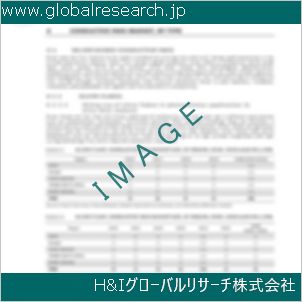Table of Contents
1 Industry Overview of Cobalt
1.1 Definition and Specifications of Cobalt
1.1.1 Definition of Cobalt
1.1.2 Specifications of Cobalt
1.2 Classification of Cobalt
1.3 Applications of Cobalt
1.3.1 Nuclear Application
1.3.2 Non-Nuclear Application
1.4 Industry Chain Structure of Cobalt
1.5 Industry Overview and Major Regions Status of Cobalt
1.5.1 Industry Overview of Cobalt
1.5.2 Global Major Regions Status of Cobalt
1.6 Industry Policy Analysis of Cobalt
1.7 Industry News Analysis of Cobalt
2 Manufacturing Cost Structure Analysis of Cobalt
2.1 Raw Material Suppliers and Price Analysis of Cobalt
2.2 Equipment Suppliers and Price Analysis of Cobalt
2.3 Labor Cost Analysis of Cobalt
2.4 Other Costs Analysis of Cobalt
2.5 Manufacturing Cost Structure Analysis of Cobalt
2.6 Manufacturing Process Analysis of Cobalt
3 Technical Data and Manufacturing Plants Analysis of Cobalt
3.1 Capacity and Commercial Production Date of Global Cobalt Major Manufacturers in 2023
3.2 Manufacturing Plants Distribution of Global Cobalt Major Manufacturers in 2023
3.3 R&D Status and Technology Source of Global Cobalt Major Manufacturers in 2023
3.4 Raw Materials Sources Analysis of Global Cobalt Major Manufacturers in 2023
4 Capacity, Production and Revenue Analysis of Cobalt by Regions, Types and Manufacturers
4.1 Global Capacity, Production and Revenue of Cobalt by Regions 2019-2024
4.2 Global and Major Regions Capacity, Production, Revenue and Growth Rate of Cobalt 2019-2024
4.3 Global Capacity, Production and Revenue of Cobalt by Types 2019-2024
4.4 Global Capacity, Production and Revenue of Cobalt by Manufacturers 2019-2024
5 Price, Cost, Gross and Gross Margin Analysis of Cobalt by Regions, Types and Manufacturers
5.1 Price, Cost, Gross and Gross Margin Analysis of Cobalt by Regions 2019-2024
5.2 Price, Cost, Gross and Gross Margin Analysis of Cobalt by Types 2019-2024
5.3 Price, Cost, Gross and Gross Margin Analysis of Cobalt by Manufacturers 2019-2024
6 Consumption Volume, Consumption Value and Sale Price Analysis of Cobalt by Regions, Types and Applications
6.1 Global Consumption Volume and Consumption Value of Cobalt by Regions 2019-2024
6.2 Global and Major Regions Consumption Volume, Consumption Value and Growth Rate of Cobalt 2019-2024
6.3 Global Consumption Volume and Consumption Value of Cobalt by Types 2019-2024
6.4 Global Consumption Volume and Consumption Value of Cobalt by Applications 2019-2024
6.5 Sale Price of Cobalt by Regions 2019-2024
6.6 Sale Price of Cobalt by Types 2019-2024
6.7 Sale Price of Cobalt by Applications 2019-2024
6.8 Market Share Analysis of Cobalt by Different Sale Price Levels
7 Supply, Import, Export and Consumption Analysis of Cobalt
7.1 Supply, Consumption and Gap of Cobalt 2019-2024
7.2 Global Capacity, Production, Price, Cost, Revenue, Supply, Import, Export and Consumption of Cobalt 2019-2024
7.3 USA Capacity, Production, Price, Cost, Revenue, Supply, Import, Export and Consumption of Cobalt 2019-2024
7.4 EU Capacity, Production, Price, Cost, Revenue, Supply, Import, Export and Consumption of Cobalt 2019-2024
7.5 China Capacity, Production, Price, Cost, Revenue, Supply, Import, Export and Consumption of Cobalt 2019-2024
7.6 Japan Capacity, Production, Price, Cost, Revenue, Supply, Import, Export and Consumption of Cobalt 2019-2024
8 Major Manufacturers Analysis of Cobalt
8.1 Manufacturer One
8.1.1 Company Profile
8.1.2 Product Picture and Specifications
8.1.2.1 Type I
8.1.2.2 Type II
8.1.2.3 Type III
8.1.3 Capacity, Production, Price, Cost, Gross and Revenue
8.1.4 Contact Information
8.2 Manufacturer Two
8.2.1 Company Profile
8.2.2 Product Picture and Specifications
8.2.2.1 Type I
8.2.2.2 Type II
8.2.2.3 Type III
8.2.3 Capacity, Production, Price, Cost, Gross and Revenue
8.2.4 Contact Information
8.3 Manufacturer Three
8.3.1 Company Profile
8.3.2 Product Picture and Specifications
8.3.2.1 Type I
8.3.2.2 Type II
8.3.2.3 Type III
8.3.3 Capacity, Production, Price, Cost, Gross and Revenue
8.3.4 Contact Information
8.4 Manufacturer Four
8.4.1 Company Profile
8.4.2 Product Picture and Specifications
8.4.2.1 Type I
8.4.2.2 Type II
8.4.2.3 Type III
8.4.3 Capacity, Production, Price, Cost, Gross and Revenue
8.4.4 Contact Information
8.5 Manufacturer Five
8.5.1 Company Profile
8.5.2 Product Picture and Specifications
8.5.2.1 Type I
8.5.2.2 Type II
8.5.2.3 Type III
8.5.3 Capacity, Production, Price, Cost, Gross and Revenue
8.5.4 Contact Information
…
9 Marketing Trader or Distributor Analysis of Cobalt
9.1 Marketing Channels Status of Cobalt
9.2 Traders or Distributors with Contact Information of Cobalt by Regions
9.3 Ex-work Price, Channel Price and End Buyer Price Analysis of Cobalt
9.4 Regional Import, Export and Trade Analysis of Cobalt
10 Industry Chain Analysis of Cobalt
10.1 Upstream Major Raw Materials Suppliers Analysis of Cobalt
10.1.1 Major Raw Materials Suppliers with Contact Information Analysis of Cobalt
10.1.2 Major Raw Materials Suppliers with Supply Volume Analysis of Cobalt by Regions
10.2 Upstream Major Equipment Suppliers Analysis of Cobalt
10.2.1 Major Equipment Suppliers with Contact Information Analysis of Cobalt
10.2.2 Major Equipment Suppliers with Product Pictures Analysis of Cobalt by Regions
10.3 Downstream Major Consumers Analysis of Cobalt
10.3.1 Major Consumers with Contact Information Analysis of Cobalt
10.3.2 Major Consumers with Consumption Volume Analysis of Cobalt by Regions
10.4 Supply Chain Relationship Analysis of Cobalt
11 Development Trend of Analysis of Cobalt
11.1 Capacity, Production and Revenue Forecast of Cobalt by Regions and Types
11.1.1 Global Capacity, Production and Revenue of Cobalt by Regions 2024-2029
11.1.2 Global and Major Regions Capacity, Production, Revenue and Growth Rate of Cobalt 2024-2029
11.1.3 Global Capacity, Production and Revenue of Cobalt by Types 2024-2029
11.2 Consumption Volume and Consumption Value Forecast of Cobalt by Regions, Types and Applications
11.2.1 Global Consumption Volume and Consumption Value of Cobalt by Regions 2024-2029
11.2.2 Global and Major Regions Consumption Volume, Consumption Value and Growth Rate of Cobalt 2024-2029
11.2.3 Global Consumption Volume and Consumption Value of Cobalt by Types 2024-2029
11.2.4 Global Consumption Volume and Consumption Value of Cobalt by Applications 2024-2029
11.3 Supply, Import, Export and Consumption Forecast of Cobalt
11.3.1 Supply, Consumption and Gap of Cobalt 2024-2029
11.3.2 Global Capacity, Production, Price, Cost, Revenue, Supply, Import, Export and Consumption of Cobalt 2024-2029
11.3.3 USA Capacity, Production, Price, Cost, Revenue, Supply, Import, Export and Consumption of Cobalt 2024-2029
11.3.4 EU Capacity, Production, Price, Cost, Revenue, Supply, Import, Export and Consumption of Cobalt 2024-2029
11.3.5 China Capacity, Production, Price, Cost, Revenue, Supply, Import, Export and Consumption of Cobalt 2024-2029
11.3.6 Japan Capacity, Production, Price, Cost, Revenue, Supply, Import, Export and Consumption of Cobalt 2024-2029
12 New Project Investment Feasibility Analysis of Cobalt
12.1 New Project SWOT Analysis of Cobalt
12.2 New Project Investment Feasibility Analysis of Cobalt
13 Conclusion of the Global Cobalt (CAS 7440-48-4) Industry 2024 Market Research Report
| ※参考情報 コバルトは、元素記号Coおよび原子番号27を持つ金属であり、周期表の遷移金属グループに属します。コバルトは、自然界では主に鉱石として存在し、主にニッケルや銅とともに鉱山から採掘されます。コバルトは、地球の地殻において比較的少量存在する元素ですが、その特性からさまざまな産業において重要な役割を果たしています。 コバルトの物理的な特徴としては、銀白色で硬く、金属の光沢を持ちます。また、コバルトは空気中で酸化しやすく、特定の条件下では酸化コバルト(CoOやCo3O4など)として存在することが一般的です。コバルトの融点は1495℃、沸点は2927℃と高温であり、耐熱性が高いことも特徴です。この高い融点は、コバルトを高温環境で使用する際の利点となります。 コバルトの用途は非常に広範囲にわたります。最も一般的な用途は、合金の製造です。コバルトはニッケル、鉄、クロムなどの金属と合金化することで、耐久性や耐熱性を向上させることができます。特に、航空宇宙産業や自動車産業では、コバルトベースの合金がエンジン部品やタービンに使用されます。これにより、エンジンの効率や耐久性が向上し、軽量化も実現されます。 さらに、コバルトはバッテリー製造においても重要な役割を果たしています。特にリチウムイオン電池においては、正極材として使用されることが一般的です。コバルトを含むリチウムコバルト酸化物(LiCoO2)は、高いエネルギー密度と安定性を有し、スマートフォンや電動車両に幅広く利用されています。しかし、コバルトの供給が限られているため、持続可能なエネルギー源を模索する動きがあり、コバルトフリーのバッテリー技術の開発が進められています。 コバルトはまた、触媒としても利用されています。例えば、化学反応の促進や構造反応において、コバルトを含む触媒が使用されることがあります。この場合、コバルトの特性を活用して、化学反応の効率を向上させることが可能です。 健康に関しては、コバルトは微量元素として生物に必要ですが、高濃度での摂取は有害です。特にコバルト中毒は、神経系や心臓に悪影響を及ぼすことがあります。そのため、コバルトの取り扱いや使用には注意が必要です。また、環境問題においても、コバルトの採掘過程やリサイクルが注目されています。特に発展途上国での鉱山からの採掘においては、労働者の健康や環境への影響が懸念されています。 コバルトの技術的進展としては、コバルトを利用した新しい材料の開発や、リサイクル技術の向上が挙げられます。特に、コバルトを使用した合金の特性をさらに向上させるため、新しい合金成分の組み合わせや製造プロセスの最適化が研究されています。また、コバルトのリサイクル技術も進化しており、使用済みバッテリーや合金からのコバルトの回収が重要な課題とされています。 今後の展望としては、コバルトの持続可能な利用が焦点となるでしょう。特に、再生可能エネルギー技術の進展や、電動車両の普及に伴い、コバルトの需要が増加することが予想されます。そのため、コバルトの代替材料の探求やリサイクル技術の強化が重要になると考えられます。また、コバルトの採掘による環境への影響を抑えるための取り組みも必要です。 総じて、コバルトは多岐にわたる用途を持つ重要な金属であり、その特性を活かした技術の発展が期待されています。今後の動向に注目しながら、サステナブルな利用と環境保護を両立させるための研究や開発が進むことが求められています。コバルトの重要性は今後も高まる一方で、その利用に伴う課題に対して適切な対応が求められるでしょう。 |
❖ 免責事項 ❖
http://www.globalresearch.jp/disclaimer












